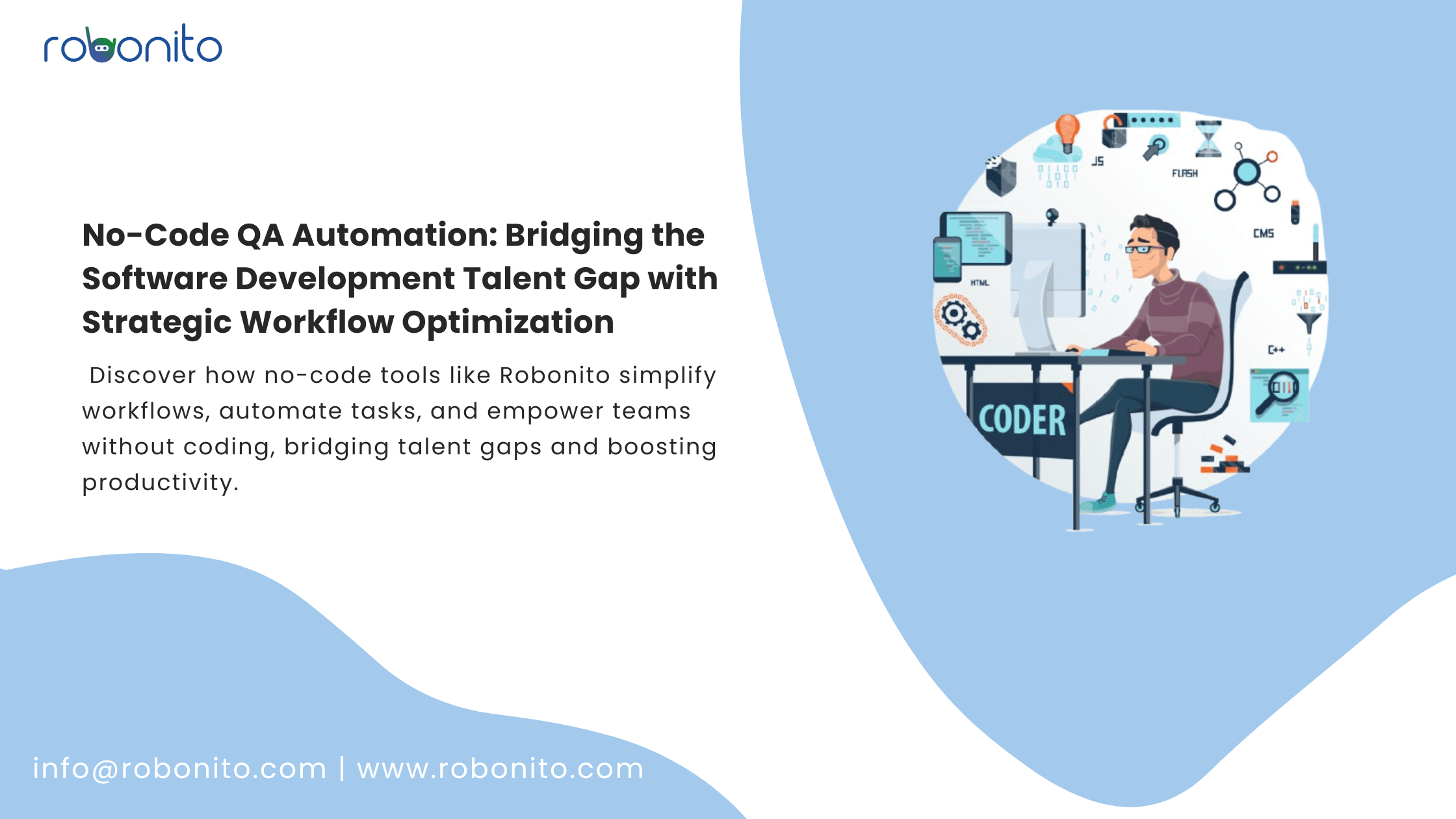The Growing Challenge in Software Development
 By 2026, the United States is projected to face a shortage of over 1.2 million software developers and engineers. This impending talent gap presents a critical challenge for organizations seeking to maintain technological competitiveness and operational efficiency.
**
By 2026, the United States is projected to face a shortage of over 1.2 million software developers and engineers. This impending talent gap presents a critical challenge for organizations seeking to maintain technological competitiveness and operational efficiency.
**
Understanding No-Code Automation**
No-code automation represents a strategic approach to mitigating software development constraints by enabling non-technical professionals to create automated workflows without extensive programming expertise. Unlike traditional development models, no-code platforms leverage:
- Intuitive drag-and-drop interfaces
- Visual workflow designers
- Pre-configured templates
- Advanced record and playback functionalities
- Sophisticated process mining capabilities
Example: Imagine a customer support team needing to follow up on unresolved tickets. Instead of writing custom scripts, they can use a no-code platform to set up an automated workflow:
1.Trigger: Check for unresolved tickets daily. 2.Condition: Identify tickets inactive for 24 hours. 3.Action: Send automated follow-up emails.
Types of No-code Automation
- Workflow Automation Automates tasks like employee onboarding or order processing. Tools like Zapier and n8n streamline workflows with intuitive drag-and-drop interfaces.
- Robotic Process Automation (RPA) Automates repetitive actions such as data entry or report generation. No-code RPA tools like RobotFramework , Automation Anywhere and Monday simplify bot configuration for non-technical users and help them automate their work and tasks
- Data Integration Automation Synchronizes data across systems like CRMs and ERPs. This ensures seamless operations across complex software ecosystems.
- Website and App Building Platforms like Bubble and BuilderAI empower users to create functional websites and apps using visual editors.
- Browser Automation Automates web tasks, such as data scraping or form submissions, directly in the browser. This is invaluable for testing and data collection.
- Testing and QA Automation Tools like Robonito’s no-code test recorder allow QA teams to automate test scenarios without coding, improving efficiency and accuracy. Download Robonito for FREE
Each no code automation type caters to unique business needs, from improving team productivity to streamlining data integration.
Together, they provide companies with the agility to respond faster to market demands while optimizing internal processes.
Architectural Insights: How No-Code Automation Works
Technical Components of No-Code Platforms
Visual Development Interface
- User-centric design environments
- Modular workflow construction
- Real-time visualization of automation processes
Integration Mechanisms
- Robust API connectivity
- Cross-platform synchronization
- Event-driven trigger configurations
Advanced Logic Implementation
- Conditional rule establishment
- Automated decision trees
- Intelligent error handling and debugging frameworks
Low-Code Vs No-Code Platforms No code platforms empower non-technical users to create simple applications quickly, while low code automation platforms provide developers with the tools to build more complex applications with a mix of visual design and coding capabilities.
The choice between the two depends on:
- The project requirements
- The target audience
- The level of customization needed.
Here’s a comparison between the two:
| Feature | No Code Automation Platforms | Low Code Automation Platforms |
|---|---|---|
| Complexity | Simple applications | Advanced, customizable applications |
| Flexibility | Limited to pre-built templates | Allows custom coding |
| Learning Curve | User-friendly | Requires coding knowledge |
| Use Cases | Startups, small businesses | Enterprise-level integrations |
| Development Speed | Rapid | Moderate |
| Complexity | Simple applications | Advanced, customizable applications |
Codeless automation tools empower non-technical users to create simple applications rapidly, whereas low code automation tools offer developers the ability to build more complex, customized applications using a combination of visual design and coding.
Choosing between these platforms depends on project specifics, user capabilities, and the degree of customization required.
Understanding the distinction between no-code and low-code platforms helps organizations select the right solution for their development needs, balancing simplicity and flexibility.
Strategic Benefits for Enterprise Technology Leaders
Operational Advantages
- Accelerated development cycles
- Reduced dependency on specialized technical resources
- Enhanced operational agility
- Scalable workflow optimization
Risk Mitigation
- Standardized automation processes
- Reduced human error
- Comprehensive traceability
- Cost-effective implementation
Future Outlook
As technological ecosystems become increasingly complex, no-code automation platforms will play a pivotal role in democratizing software development and testing capabilities. By empowering cross-functional teams with intuitive tools, organizations can:
- Foster innovation
- Optimize resource allocation
- Accelerate time-to-market
- Maintain competitive technological positioning
Typical No-Code QA Automation Scenarios
- Cross-browser compatibility testing
- Automated regression testing
- Data-driven test scenario generation
- Continuous integration workflow automation

Why Choose Robonito for No-Code QA Automation? Robonito simplifies automation with features like:
- Record your workflow
- Cross-browser testing
- Data-driven testing
- AI-powered optimizations By leveraging Robonito, businesses can:
- Save time with automated testing.
- Enhance productivity through seamless workflows.
- Deliver high-quality software faster.
Download Robonito for FREE and start your automation process with Robonito today!
Conclusion
No-code automation platforms are on the rise, empowering organizations like yours to streamline their processes and accelerate development cycles without the need for extensive coding expertise.
By incorporating no code workflows, teams can achieve even greater flexibility and productivity without depending on traditional programming skills.
Understanding the differences between low code and no code platforms can help you choose the right solution for your needs.
By simplifying complex tasks, no-code platforms like Robonito enable teams to focus on innovation and efficiency, ultimately driving better outcomes and higher-quality products.
Champion the power of no-code QA automation today with Robonito, and transform your testing experience as a seamless, efficient process.
